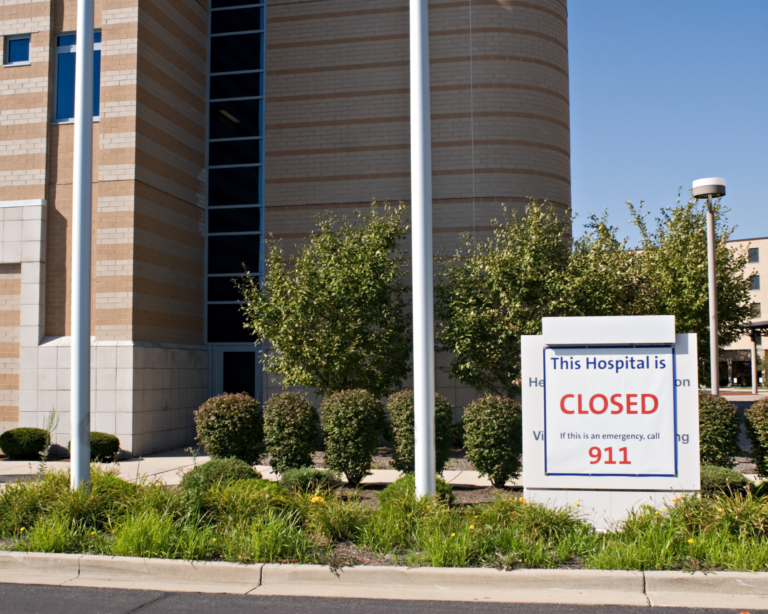The Toll of Rural Hospital Closures
From economic decline and unemployment to worsening health outcomes, rural hospital closures harm the health of the surrounding community.

Read Time: 3 minutes
Published:
When rural hospitals close, the surrounding community suffers.
Rural hospital closures have increased over the past twenty years. Since 2010, 136 rural hospitals have shut their doors with 37 ceasing operations since 2020 alone. Closures have left 10% of the rural population without access to an acute care hospital. An additional 600 hospitals in rural America are at risk of closing their doors in the future.
Hospitals struggle to stay open due to financial instability. Although closures are witnessed across the U.S., more occur in states in the South and Midwest that have not expanded Medicaid. Medicaid expansion brings affordable health care to millions of lower-income residents by providing them with essential health insurance. Without expansion, those not covered by Medicaid or private insurance often cannot afford to pay their medical bills. Increased health care coverage for low-income individuals increases hospitals’ financial security, particularly in rural areas.
Carol A. Mills and collaborators conducted a systematic review of research assessing the health and economic impacts of rural hospital closures on communities. They evaluated 21 articles published between January 2005 and December 2021. Most studies (76.2%) focused on economic and employment outcomes, while other significant themes included patient outcomes, transportation to care, and access to providers.
Rural hospital closures may be an inevitable part of our future without policies to protect hospitals from shutting their doors.
Hospital shutdowns reinforce disparities between individuals living in urban and rural areas since rural communities tend to be older, poorer, and have higher levels of chronic diseases, such as type 2 diabetes. The closures worsen health outcomes for an already vulnerable population who have few places to turn for medical care. Additionally, hospitals are major employers. When a hospital closes its doors, local unemployment rates rise by an average of 1.6% to 3.1% and in certain instances can be far higher, affecting the economic health of an entire region.
Several economic measures decline in addition to employment. Population size decreases, poverty levels rise, and income acutely decreases by up to 4%. Such effects are seen inside and outside the health care sector, demonstrating the negative impact on the broader community.
Health services also suffer. Rural residents must travel an additional 15 minutes or more to reach the nearest emergency department, a life-threatening difference, when their local hospital shuts down. Primary care physicians leave the community, making preventive and routine care more difficult to access. Furthermore, access to lab, radiology, and diagnostic services become more limited.
Mills and colleagues recommend increased government intervention to protect hospitals from closing and protect the physical and economic health of communities. They also suggest that when a hospital is expected to close, policymakers and community leaders should plan for the anticipated effects by considering the economic and health impacts.
Rural hospital closures may be an inevitable part of our future without policies to protect hospitals from shutting their doors. Until then, rural communities may need to prepare for the inevitable negative economic and health impacts when an essential part of daily life goes away.



